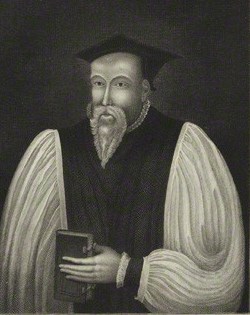St. Catherine or St. Katherine may refer to a number of saints named Catherine, or:

The Gilbertine Order of Canons Regular was founded around 1130 by Saint Gilbert in Sempringham, Lincolnshire, where Gilbert was the parish priest. It was the only completely English religious order and came to an end in the 16th century at the time of the Dissolution of the Monasteries. Modest Gilbertine revivals have taken place in the late 20th and early 21st centuries on three continents.

Bracebridge Heath is a village and civil parish in the North Kesteven district of Lincolnshire, England. It is 2 miles (3 km) south of Lincoln and straddles the border with the Lincoln and North Kesteven district boundaries.

Sempringham is a village in the civil parish of Pointon and Sempringham, in the South Kesteven district of Lincolnshire, England. It is situated 2 miles (3.2 km) south from the A52 road, 12 miles (19 km) east from Grantham and 8 miles (13 km) north from Bourne. The hamlet is on the western edge of the Lincolnshire Fens, the closest village being Billingborough, 0.5 miles (0.8 km) to the north on the B1177 road. Sempringham is noted as the home of Gilbert of Sempringham, the son of the lord of the manor. Gilbert is the only English Saint to have founded a monastic order, the Gilbertines. In 1921 the parish had a population of 112. On 1 April 1931 the parish was abolished to form "Pointon and Sempringham".

Merton Priory was an English Augustinian priory founded in 1114 by Gilbert Norman, Sheriff of Surrey under King Henry I (1100–1135). It was situated within the manor of Merton in the county of Surrey, in what is today the Colliers Wood area in the London Borough of Merton.
The Canons Regular of St. Augustine are Catholic priests who live in community under a rule and are generally organised into religious orders, differing from both secular canons and other forms of religious life, such as clerics regular, designated by a partly similar terminology. As religious communities, they have laybrothers as part of the community.
A canoness is a member of a religious community of vowed women, historically a stable community dedicated to the celebration of the Liturgy of the Hours in a particular church. The name corresponds to a canon, the male equivalent, and both roles share a common historical origin. As with the canons, there are two types: canonesses regular, who follow the Rule of St Augustine, and secular canonesses, who follow no monastic rule of life.

Bourne Abbey and the Parish Church of St. Peter and St. Paul is a scheduled Grade I church in Bourne, Lincolnshire, England. The building remains in parochial use, despite the 16th-century Dissolution, as the nave was used by the parish, probably from the time of the foundation of the abbey in 1138.

North Hykeham is an industrial town and civil parish in the North Kesteven District of Lincolnshire, England. It is located directly south of the city of Lincoln, where it forms the southern part of the wider Lincoln Urban Area along with Waddington, Bracebridge Heath, Canwick and South Hykeham. The parish covering the town had a population of 16,844 in the 2021 Census.

Robert Holgate was Bishop of Llandaff from 1537 and then Archbishop of York. He recognised Henry VIII as head of the Church of England.
St Catherine's is an inner-city area of Lincoln in Lincolnshire, England at the southern end of the High Street, and centred on a roundabout at its junction with the A15, B1190 and South Park Avenue. The area is bordered by South Common in the east and the River Witham in the west. It is built over the site of the 12th century Priory of Saint Katherine without Lincoln, a monastic community that ran the Hospital of Saint Sepulchre.

The A607 is an A road in England that starts in Belgrave, Leicester and heads northeastwards through Leicestershire and the town of Grantham, Lincolnshire, terminating at Bracebridge Heath, a village on the outskirts of Lincoln. It is a primary route from Thurmaston to the A1 junction at Grantham.

The Priory Church of St Peter, Thurgarton is a former house of Canons Regular or "Black Canons" and now a Church of England church in Thurgarton, Nottinghamshire, England.

Kirby Bellars Priory was a small priory of Canons Regular of Saint Augustine in Leicestershire, England. It is now the Church of England Parish Church of Saint Peter's serving the village of Kirby Bellars.
Alvingham Priory was a Gilbertine priory in St. Mary, Alvingham, Lincolnshire, England. The Priory, established between 1148 and 1154, was a "double house", where religious of both sexes lived in two separate monasteries. They did not commonly communicate with one another, and there was an internal wall dividing their priory church. The superior of every Gilbertine house was the prioress, the prior being really an official of her house.

Bullington Priory was a priory in Bullington, Lincolnshire, England.

Sempringham Priory was a priory in Lincolnshire, England, located in the medieval hamlet of Sempringham, to the northwest of Pointon. Today, all that remains of the priory is a marking on the ground where the walls stood and a square, which are identifiable only in aerial photos of the vicinity. However, the parish church of St Andrew's, built around 1100 AD, is witness to the priory standing alone in a field away from the main road.














